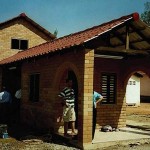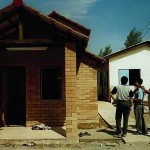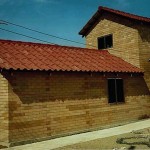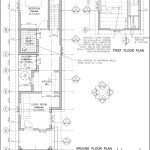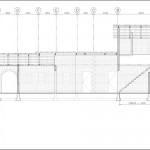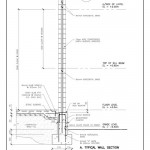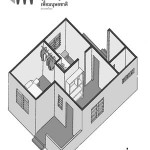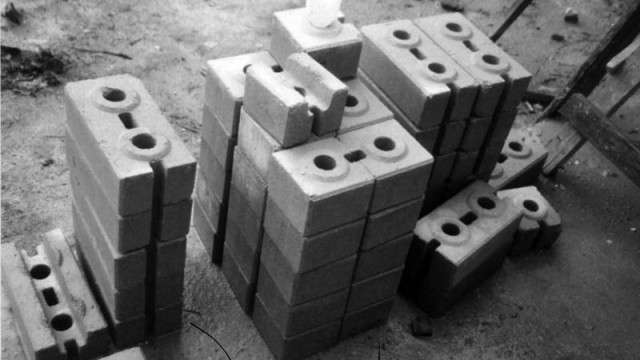
COMPRESSED EARTH BLOCK HOUSE
After the Asian tsunami in 2004, Amanda volunteered with U.S. Peace Corps Response as an architect and furniture builder in the Phang-nga Province of Thailand. This house is located in Ban Nam Khem, a village that lost 3000+ people in the tsunami.
Compressed Interlocking Blocks (CIB) are building blocks made of locally sourced soil, sand, and cement, manually compressed into a block that interlocks with other blocks laid without mortar. Vertical reinforcing bar is used for stabilization at corners and door and window openings. The house is a show house, designed for a family starting a CIB production business on a neighboring lot. The house demonstrates the possibilities of building with CIB’s, including multiple levels and arches, while solving the problem posed by typical long and narrow Thai plot sizes. The design evolved from regular meetings with the owner and donor, primarily using cardboard models and 3-D hand sketches, as spoken language was sometimes a barrier. Respect for Thai culture, knowledge of programmatic needs for a Thai family and CIB business, and input from the owner and donor all contributed to the overall design.
As an architect with Habitat For Humanity, Amanda helped design four house options to be built in an area affected by the tsunami, with consideration for use of locally available materials, budget and site constraints, and volunteer labor. In addition to design services, Amanda prepared material cost estimates and bill of quantities for new houses and the repair of damaged houses. Amanda also provided supplemental axonometric and perspective sketches of new homes to be used in presentations and given to homeowners.
In addition to working as an architect and with HFH, along with her Peace Corps team, Amanda designed, constructed, and installed furniture for 100 families living in the temporary shelters.
